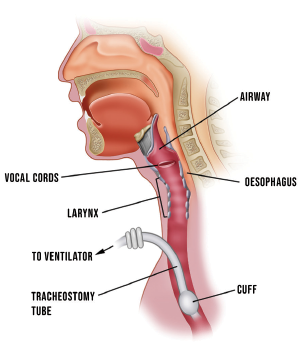 TRIO Best Practice articles are brief, structured reviews designed to provide the busy clinician with a handy outline and reference for day-to-day clinical decision making. The ENTtoday summaries below include the Background and Best Practice sections of the original article. To view the complete Laryngoscope articles free of charge, visit Laryngoscope.
TRIO Best Practice articles are brief, structured reviews designed to provide the busy clinician with a handy outline and reference for day-to-day clinical decision making. The ENTtoday summaries below include the Background and Best Practice sections of the original article. To view the complete Laryngoscope articles free of charge, visit Laryngoscope.
Explore This Issue
January 2020Background
Tracheotomy is a commonly performed procedure meant to obviate the need for translaryngeal ventilation in cases of respiratory failure. In the early and mid-20th century, tracheostomy was once thought mandatory after 24 hours of translaryngeal intubation. However, advancement in endotracheal tube design and recognition of key principles mitigating complications (e.g., small tube size, low cuff pressures, and pulmonary hygiene) have pushed this timeframe back.The optimal timing of tracheostomy among intubated patients is a point of ongoing debate, wherein a spectrum of distinct considerations, including impact on ventilator-associated pneumonia (VAP), laryngotracheal injury, and mortality are assessed. Establishing a discrete temporal threshold for tracheostomy is complicated by the existence of a heterogenous patient population with inherently distinct risks for intubation-related complications. The existing literature is equally heterogenous in reporting morbidity and mortality incidence associated with prolonged intubation. There is also significant variability defining prolonged intubation itself. As it stands, there is no consensus regarding the optimal timing of tracheostomy.
Best Practice
Data concerning patient outcomes related to timing of tracheostomy are heterogenous; however, there are no data to suggest that delayed tracheostomy offers a morbidity or mortality advantage. An upper limit of 10 days of endotracheal intubation guiding timing of tracheostomy has been associated with a improved overall mortality and decreased duration of inpatient care required in a critical care setting. Certain patient subpopulations, including the obese and those patients intubated with large endotracheal tubes, are more likely to suffer from laryngotracheal stenosis and may be more likely to benefit from early tracheostomy.
